We come today with the matter of kitchen floors where the incorporation into the market of new materials and their imitations makes the options multiply when deciding on their design.
Until recently the matter did not merit debate. Nobody considered putting any material on the kitchen floor that was not a resistant tile (hard, resistant and scrubbing), to help make the kitchen a practical and functional workspace. Of course, aesthetics mattered. It always has. Although you had to choose (which was not a little) the color, size and finish of the tiles, the floor only had to go “to match” with the kitchen without taking into account the rest of the house.
But now that the kitchens have been more actively opened to the house, either because an open kitchen has been chosen or because the glass doors that separate it from the rest of the house open it visually, what is no doubt is than When choosing the kitchen floor you have to choose a finish that is consistent with the rest of the house.
In fact one of the most pronounced trends of the moment is place the same covering in the kitchen as in the rest of the house.
The same coating in the kitchen as in the rest of the house
Something for which there are no problems when it comes to porcelain floor or of microcement or polished cement but which is also done many times with laminate flooring, with which you will not suffer much from getting wet or staining But yes when you drop a plate because they do not have the same hardness as porcelain.
The bravest dare to put the parquet in the kitchen. As for bringing the parquet to the kitchen we do not know very well if it is a Nordic heritage (part of the charm of its kitchens is in the natural floor) what we do know is that if you decide on this option you will surely need a good carpet to protect it.
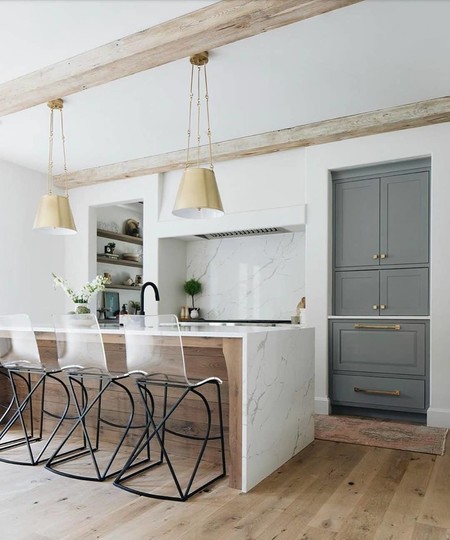
Via @vivirdesing
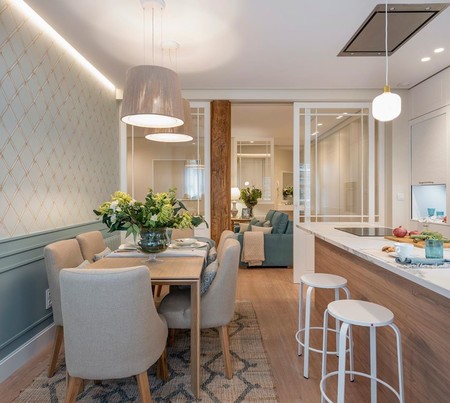
Via @subeinteriorismo
A different material for the kitchen floor
When the option is to choose another material there are two options. Choose a finish that blends discreetly with the floor of the rest of the house or choose one that contrasts and attracts many eyes.
A different floor in the kitchen but in harmony with the rest of the house
If you choose to be discreet and go unnoticed, try to choose another material in a similar but better color don’t try to imitate the same coating on another material. I explain. If you have a natural herringbone parquet and you also want it in the kitchen, do not put a porcelain tile that imitates it because the finish and the nuances will not be the same and will lead to confusion. As if something strange happened in the kitchen.
Ideally, choose a similar color but in tile or wide foil format with a different layout so that at least nor there are doubts that the material chosen in the kitchen It is different although it does not interrupt the aesthetics and colors of the rest of the house.
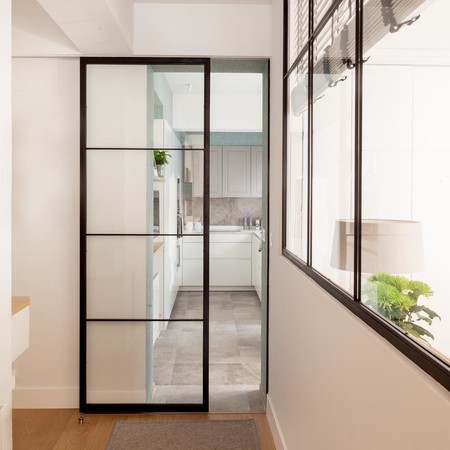
Via @nataliazubizarretainteriorismo
A different floor for the kitchen that contrasts with the rest of the house
If on the contrary you want to give a kick test try to choose a nice design for the floor that takes part of the leading role in the kitchen. Tiles with 3D graphics or imitating hydraulics will help you achieve that effect. What you will have to be especially careful in this case is with the cutting or cutting between the kitchen floor and the rest is well defined and do not cut pieces of parquet or tile unnecessarily.
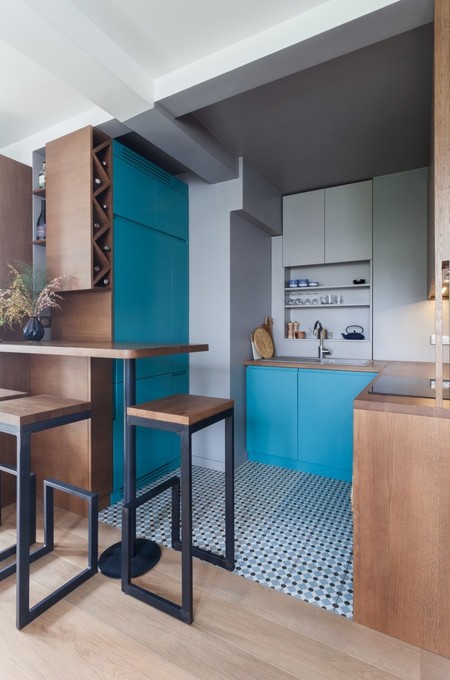
Image and project by Katarina Mijic
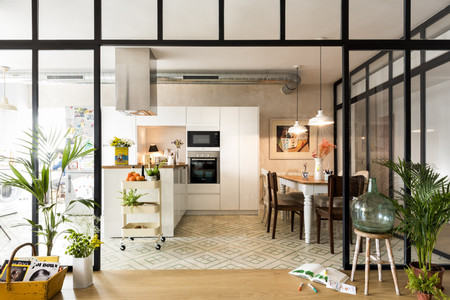
Another intermediate option is to bring the same parquet to almost the entire kitchen except for the work area in front of the kitchen furniture. It will be as if the tiles created a protective mat, a common resource in Egue and Seta designs.
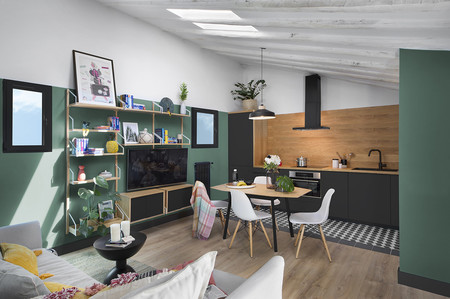
Image of Vicuyo. Egue & Seta Project
Cover image Austin Maynard Architects Photographs by Tess Kelly
Similar in Decoesfera | Gala bets on natural materials such as stone, marble or wood in its new collection for 2020
Inspirational and stylish flooring for the bathroom


